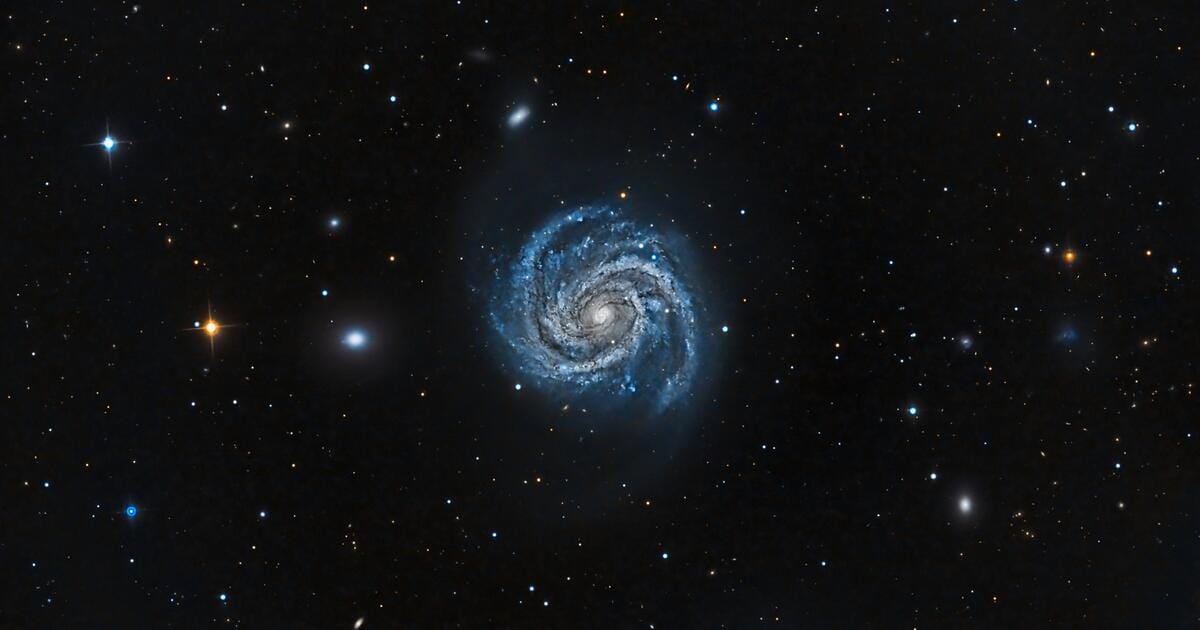In an intriguing new development in planetary defense, astronomers are closely tracking asteroid 2024 YR4, a space object discovered in late 2024, that has a slightly higher risk of colliding with Earth than initially estimated. Originally rated with a 1.2 percent chance of impact, the likelihood has been recalculated and raised to 2.3 percent by experts, following further observations. While the chances remain small, the updated risk level is sufficient to place the asteroid high on monitoring lists, drawing global attention to its potential trajectory and impact scenarios.
Asteroid 2024 YR4 was first detected on December 27, 2024, by the El Sauce Observatory in Chile. Early examinations identified it as a near-Earth object spanning an estimated 130 to 328 feet in width. For context, this size is significant enough to cause regional devastation if it were to strike Earth. The asteroid orbits the Sun, periodically coming close to our planet’s orbital path at intervals. It has been pinpointed to make its closest approach to Earth on December 22, 2032—marking this date as a pivotal moment for planetary scientists and government agencies alike.
Following the initial discovery, astronomers worldwide began tracking 2024 YR4 to better determine its orbit. Advanced tracking techniques and calculations, central to such undertakings, focus on minimizing margin errors that could affect predictions. Data collected recently indicates that gravitational influences—both from the Earth and other celestial bodies—could marginally alter the asteroid’s trajectory, raising its risk profile slightly. These fluctuating risk factors illustrate the inherent challenges and uncertainties in monitoring near-Earth objects over extended periods.
Using the Torino Impact Hazard Scale, which gauges the risk of asteroid collisions, asteroid 2024 YR4 is currently rated as a Level 3 event, out of a maximum of 10. A Level 3 designation means “a close encounter, with a 1 percent or greater chance of a collision capable of causing localized destruction.” Though this status warrants careful monitoring, it does not yet rise to the level of global emergency, which typically corresponds with Level 8 or higher. However, rare Level 3 classifications still invite robust investigations to refine predictions and explore potential mitigation measures.
Planetary defense teams from key space agencies, including NASA and the European Space Agency (ESA), have convened to discuss mitigation strategies for such scenarios. At this early stage, the consensus among experts is that 2024 YR4’s impact risk does not necessitate immediate deflection interventions but does emphasize the importance of thorough preparations. Simulations suggest that slight redirections in the asteroid’s route—using technologies like kinetic impactors or gravity tractors—could effectively reduce collision probabilities should risks escalate further closer to its estimated arrival.
Scientists also emphasize the need for additional observations. Each approach of 2024 YR4 to Earth’s vicinity offers an opportunity to refine its trajectory and adjust risk assessments. In recent years, advances in ground-based telescopic arrays and space-based observations have significantly enhanced the accuracy of forecasting tools. Sky surveys, employing wide-field digital imaging, yield supplementary data about the asteroid’s motion, size, and composition—essential characteristics for modeling its path and its potential physical impact.
Public interest in 2024 YR4 has surged as news emerged about its refined risk profile. While experts attempt to reassure the global population that the probability of a catastrophic collision remains exceedingly low, they also highlight the broader need for proactive investment in planetary defense research. The ability to accurately predict and respond to such celestial threats could, someday, prove critical in averting disaster.
Historically, close encounters with asteroids remind humanity of the unpredictable nature of space phenomena. Past events, such as the Tunguska explosion of 1908 and the Chelyabinsk meteor event of 2013, have underscored the catastrophic potential of even smaller-sized objects. These incidents have also driven remarkable progress in how we catalog and study near-Earth asteroids, with organizations like the International Asteroid Warning Network (IAWN) assuming key roles in collaborative planetary monitoring.
Essentially, while asteroid 2024 YR4 represents a minute existential risk, it has become an emblematic case for how the global scientific community approaches planetary defense. As the calendar advances toward 2032, astronomers and space agencies remain focused not merely on the specifics of 2024 YR4 but also on enhancing methods to prevent future planetary collisions. Investments in cutting-edge detection technologies and developments in physics-based deflection strategies symbolize steps deliberately taken to secure Earth from such cosmic vulnerabilities.
With the final fate of 2024 YR4 to be determined over the course of years, its discovery and subsequent examinations illustrate humanity’s ever-growing vigilance regarding potentially hazardous celestial objects. Whether the asteroid ultimately veers far off course or draws perilously close, the renewed focus on planetary defense it has inspired will leave a lasting global impact.


